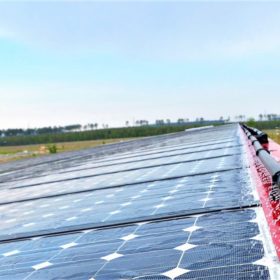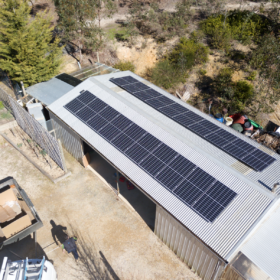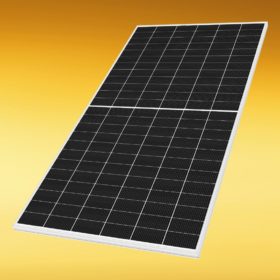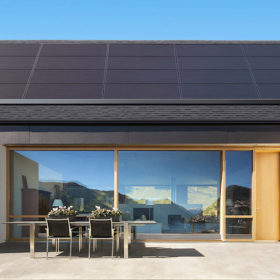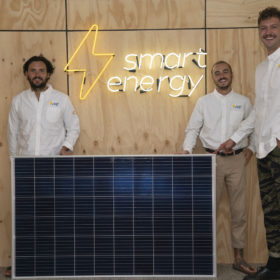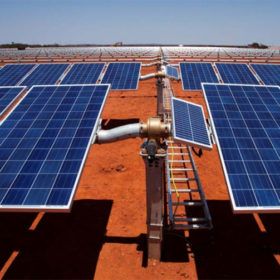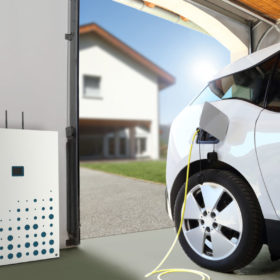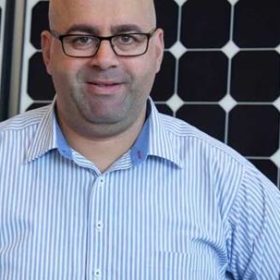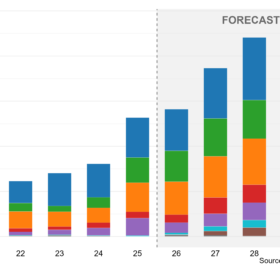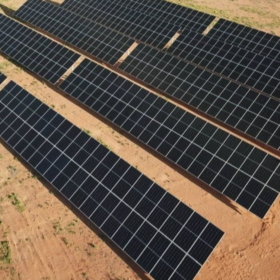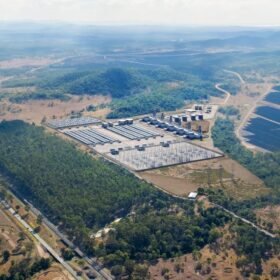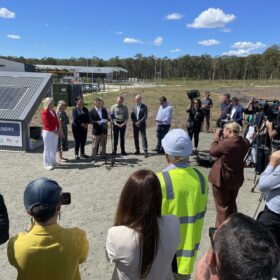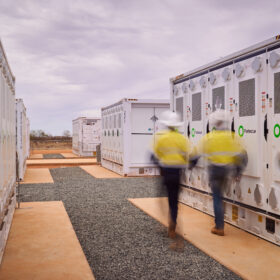Cooling down PV panels with water
France’s Sunbooster has developed a technology to cool down solar modules when their ambient temperature exceeds 25 C. The solution features a set of pipes that spread a thin film of water onto the glass surface of the panels in rooftop PV systems and ground-mounted plants. The cooling systems collect the water from rainwater tanks and then recycle, filter and store it again. The company claims the technology can facilitate an annual increase in power generation of between 8% and 12%.
Growatt awarded Top Brand PV Seal in Australia
Before Growatt won the Top Brand PV Seal award, back when “quarantine” was a foreign concept and foreign lands familiar, pv magazine took its annual China Road Trip to Shenzen to visit Growatt and learn about the company supplying solutions to 10% of Australian residential PV installs.
CEC: ‘Unlikely and difficult’ new solar installs classified as ‘essential’
With the Australian solar industry fast heading towards a significant downturn, the Clean Energy Council has reported that it will be “unlikely and difficult” for new rooftop solar installations to be classified as an essential service if restrictions are tightened. Despite the apparent gloom, industry experts advise that there are opportunities as householders look to invest in their homes during the Covid-19 crisis.
AEMO: Lessons learned about VPP market participation
The Australian Energy Market Operator (AEMO) has published its first knowledge sharing report under its landmark virtual power plant (VPP) demonstrations program, which is intended to provide insights into the scalability and network services potential of VPPs. The report details how the South Australia-based Tesla-Energy Locals VPP responded to price signals and frequency level and helps further understand the benefits consumers can have from participating in VPPs.
REC Group’s innovative Alpha 72 set for production
The REC Group’s novel Alpha 72 module has tested through the roof and is looking to come in on the roof of the market, literally. pv magazine Australia sat down with REC’s Paul Scerri to lay the module out.
Tanking Australian dollar and COVID-19: Threats and opportunities for solar and storage
The impact of COVID-19 will leave its mark on our society and economy while a sliding Australian dollar is likely to make imported goods more expensive. In its webinar held on Thursday, the Smart Energy Council is discussing business tips on how to weather the storm over the next six months. And a question arises: Can residential and commercial solar and storage buck the trend against the economic recession which is on the way?
Forget toilet paper, consumers are panic buying solar
Byron Bay’s Smart Energy is seeing an unprecedented surge in sales and enquiries of solar and home storage as consumers look to shore themselves up in uncertain times.
NSW Government upscales solar PV deployment and drives EVs towards 2030
NSW has reduced its greenhouse gas emissions by 18% from 2005 levels, but mitigation has stabilised. This weekend, NSW Energy and Environment Minister Matthew Kean released the state plan for accelerating emissions reduction to 35% by 2030. It seeks to bring existing and new initiatives; Commonwealth and State funding; the Federal focus on technology and the undeniable benefits of solar and wind generation under a single umbrella.
ACT virtual power plant trial to help optimize DER network integration
An ARENA-backed trial run by ACT network operator Evoenergy in partnership with French power electronics specialist Schneider Electric and Melbourne-based energy tech company GreenSync will research and test the effect that the integration of distributed energy resources is having on Canberra’s increasingly decentralized energy grid.
Canterbury-Bankstown wants more solar
Sydney’s City of Canterbury-Bankstown has opened an expression of interest period as it seeks the development of a single contract urban solar farm to boost its growing solar uptake.
